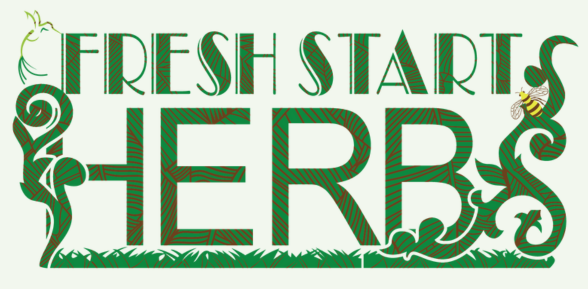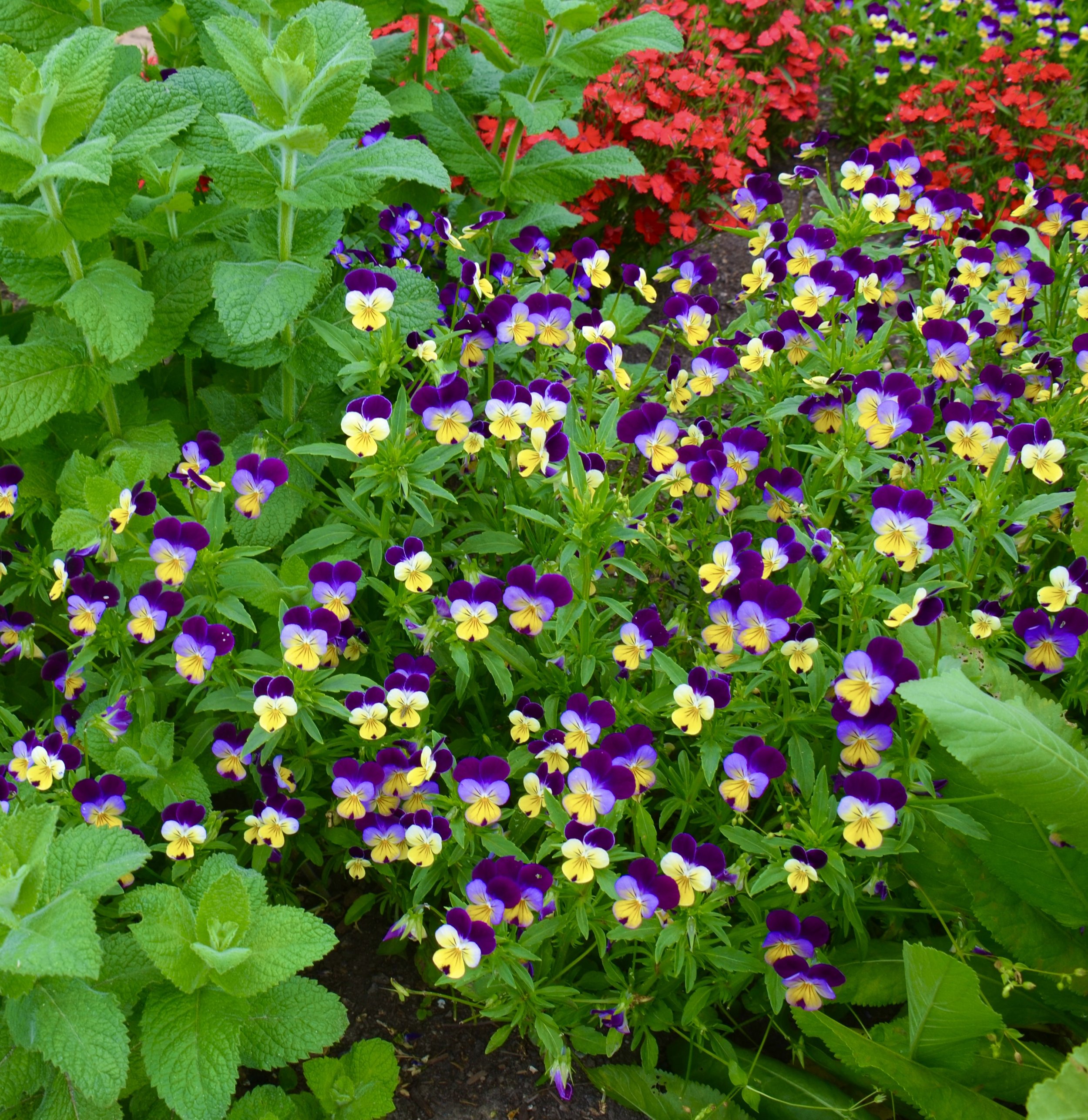The Enduring Charm of Violets, Pansies, and Johnny-Jump-Ups
Violets, pansies, and Johnny-jump-ups are among the most treasured of all our wild and garden flowers, charming children and grown-ups alike for centuries in a shared delight. If a flower is passed along to us with many common names, it's a sure sign children have loved it. Common violets are known by numerous nicknames, and Johnny-jump-up has close to a hundred. Many of the nicknames and proper names originate from the physical characteristics of the plants. Botanically, violets, pansies, and Johnny-jump-ups belong to the Violaceae family and genus Viola. There are 500 to 600 Viola species worldwide; of those, 127 are native to the United States.
If you look at a list of flowers recommended for children's gardens, you will always find Violas included. Pansies and wild violets are some of their favorite flowers. They are easy to grow from seed or starts and thrive in wildflower gardens, cultivated settings, and containers. They are tolerant of youthful curiosity and a bit of horticultural negligence and are useful for many fun activities in and out of the garden.
" Those who bend a knee where violets grow, a hundred secret things shall know.”
Violets: A Touch of Wild Beauty
Violets are low-growing herbaceous perennials with heart-shaped leaves and captivating dark purple or white flowers marked with purple. Their blooms and leaves sprout directly from underground rhizomes. The common blue violet (V. sororia) is a delightful sight, but you can also find white, pink, and yellow wild varieties. Violets thrive in sunny or lightly shaded spots with moist to average soil. Look for them around the time the redbud tree blossoms. The violet produces two sorts of flowers. Everyone knows the bright-colored flowers, but when cold temperatures or unpredictable weather prevent insects from pollinating the violet's pretty blue flowers in spring, the plant produces tiny, inconspicuous, self-pollinating flowers (cleistogamous flowers) hidden beneath leaves close to the ground.
Violets are the caterpillar host plant for the Great Spangled and Lesser Fritillary butterflies. The Viola genus supports twenty-nine butterfly and moth species. Violets are not a highly favored nectar and pollen source for insects like other spring wildflowers, but they attract native bees and syrphid flies. Cutworms, the larva of noctuid moths, cut the violet leaves off and eat them; slugs chew irregular-shaped holes in the leaves at night and hide beneath them during the day.
Johnny-jump-ups and Pansies: Delight and Whimsy
Johnny-jump-ups are cheerful biennials with upright stems. They sport small yet vibrant blooms in blue, yellow, and white. These prolific bloomers readily self-seed, bringing pops of color throughout the garden.
Johnny -Jump-Up also called “heartsease”
With their striking faces, Pansies were initially bred from the humble Johnny-jump-up, affectionately called heartsease. In the 1830s, breeders crossed Johnny-jump-ups (V. tricolor) with the related plant Viola lutea, resulting in the iconic pansy (Viola xwttrockiana). Pansies are zany annuals with large flowers up to 3 inches across and a profusion of markings and color combinations. Children adore them for their resemblance to human faces—some seemingly happy, others surprised or mischievous.
Both pansies and Johnny-jump-ups love cool weather. Trim them midsummer for a fresh round of fall blooms. Keep them lightly moist, offer good soil and drainage, and enjoy their whimsical pops of color year after year.
A Rich History: Food, Folklore and Fun
Violas have been used for centuries in food, medicine, and play. Packed with vitamin C, wild violet leaves and flowers make wonderful additions to spring salads and tonics. Violet flowers are used to make candy, jam, and herbal syrups. Native Americans used violet rhizomes to make an insect-repelling infusion for soaking seed corn before planting.
Every plant has a story, and violets are no exception. Violets symbolize constancy and modesty. Pansies, from the French word "pensées" (thoughts), represent thoughts of love. There are countless legends surrounding Viola – stories of gods, heartbroken fairies, and hidden beauty.
The Thoughtful Pansy - By Skye Suter
Of the many legends associated with violas, this one tells us how violets came to be.
Midas, the King of Phrygia, had a daughter, Ianthis, who was the apple of his eye. She was betrothed to Atys, a match he had carefully chosen for her. One day, the sun-god, Apollo came across her and was so struck by her beauty that he demanded Ianthis in marriage. Midas, who held a deep-seated grudge against Apollo, adamantly refused to let her leave her engagement to Atys. Apollo, determined, decided to carry her off as Pluto did Proserpina. A handmaiden of the Goddess of Love, Diana, Ianthis, cried out to her for help when the sun-god seized her from his chariot. Diana heard her handmaid's anguished cry, transforming her into a wild blue violet. Concealed from Apollo's sight by her green leaves, he was forced to leave without her. According to legend, ever since, "The violets have blossomed in the shade, which their own leaves have made."
Johnny-jump-up or heartsease has long been associated with unrequited love and fairies; this tidbit of flower lore explains how it all came about. Once upon a time, some very foolish little sprites fell in love with some pretty young mortals they chanced upon during one of their covert visits to Earth. Unfortunately, being unworldly, they did not realize that "fairies cannot be with mortals, mate." When their Queen heard of their capers, she was very angry and forbade them ever to leave fairyland again. The poor little things were so grieved they wasted away and died. Cupid felt so sorry for the lovelorn sprites that he persuaded the Fairy Queen to change them into a flower called heartsease. That's why these dear little plants have been associated with broken hearts.
An old plant proverb states, "he who bends a knee where violets grow, a hundred secret things shall know.” Children can learn about plants by experimenting with their leaves, roots, flowers, and stems, and they can observe how local plants and insects respond to weather and climate changes. Interestingly, data from 1890, 1937, and 1959 shows that playing with plants was a favorite pastime among children in 1890, but it sadly disappeared by 1959.
Violet Roosters is a flower game that children have played with wild violets dating back centuries. Children would divide into two teams. Each team collected an equal number of long-stemmed violets and sat facing each other. Each player would take a violet in hand and hook the head of the violet flower under the head of his opponent's flower. The projecting spur under the curved stem at the base of the violet worked like a hook, interlacing the two flower heads together. They would pull until the stronger conquered the weaker by popping off the head of their opponent's flower. Whichever team accumulated the most flower heads won the game.
Wild Violets
An excerpt from, Select Amusements in Philosophy and Mathematics / Proper for Agreeably Exercising the Minds of Youth , L Despiau www.ForgottenBooks.com
Kitchen Chemistry with Violets
Chemists and amateurs alike once used the juice from mashed violet flowers to determine a substance's acid or alkaline nature. When violet flower juice is touched by an acid such as distilled white vinegar or lemon juice, the fluid turns pinkish red, and if touched by an alkaline base such as ammonia or baking soda, it turns green. This simple recipe will visually demonstrate the color change when an acid is combined with the juice of violets.
1. Violet syrup
2 cups of fresh pesticide-free wild blue-violet flowers
2 cups sugar
2 cups water
Combine all the ingredients in a medium pan and bring to a soft boil, stirring occasionally. Remove from heat and let cool thoroughly. Set for 8 hours. Strain violets from the sugar syrup into a sterile jar. Store in the refrigerator for up to 3 weeks.
2. Lemonade with Violet Syrup
Ice cubes
3 tablespoons violet syrup
1 cup sparkling Pellegrino mineral water
2 tablespoons fresh lemon juice
Instructions for mixing lemonade
Add 3 tablespoons of violet syrup to a cup of sparkling water, stir well, and then add several ice cubes. Last but not least, add 2 tablespoons of lemon juice to the water and violet syrup and stir. Then watch and savor the magic!











